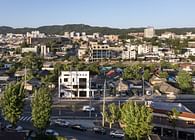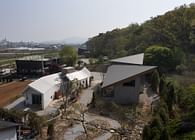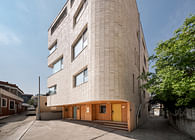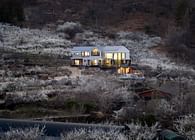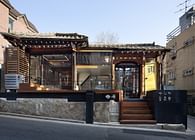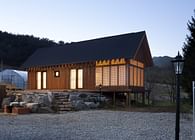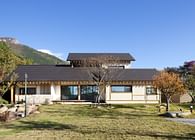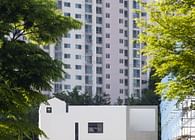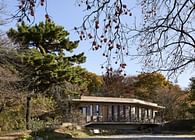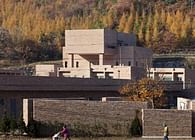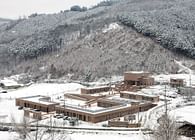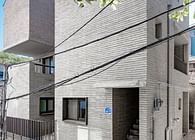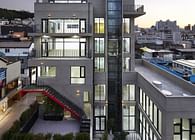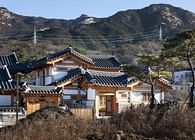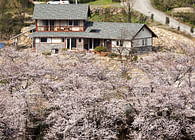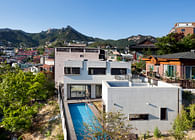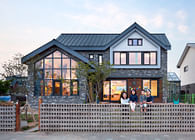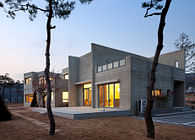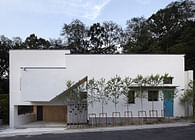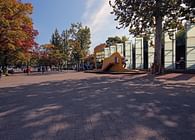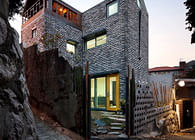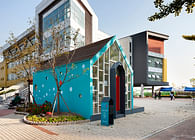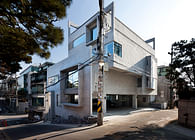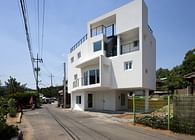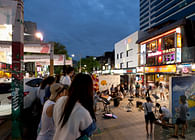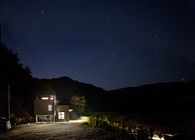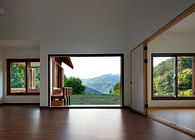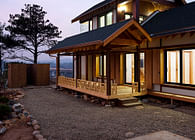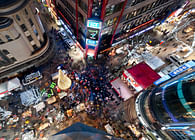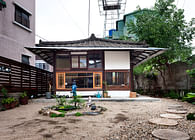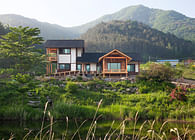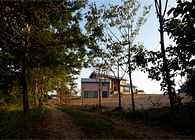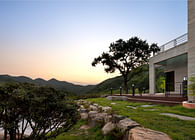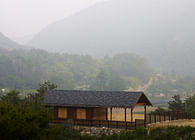
Seoul, KR
We had been asked to renovate an old building built in Myeongil-dong at the eastern end of Seoul. It was built in the 1980s when the population of Seoul surged, and every corner of the city was filling up with similar buildings. The exterior was covered with tiles, medium-colored between brown and purple, popular at the time. The tiles were falling off the façade of the building one by one as if they were rebellious as they entered puberty.
The building stood at the entry way to the neighborhood, in a state as if it were quietly crumbling under the sunset. On the first day we went to see the building, we looked at such a scene for a long time, pondering on how to revive the old, dark building. Then it occurred to us that it was as if we were looking at the entrance of the village after coming back from a long trip.
Our country traditionally plants large trees at the entrance of a village. The act of planting trees marks that the beginning of a village. In addition, it would have been meaningful and functional to let the village members rest comfortably for a while under the great shadow of the symbolic tree. Thus, the tree has a spiritual meaning and symbolizes a guardian spirit to protect the neighborhood. Most of them are zelkova trees, locust trees, or hackberry trees, and they age well over several hundred years.
It is hard to see such a big tree these days, especially in the urban context. The disappearance of such symbols is a phenomenon caused by intensified urbanization. The pace and scope of modernization ever in acceleration and expansion, such an old symbol has become a shabby, old, unwanted symbol like a retired head of the family.
Looking at the building in the sunset, we thought it would be nice to plant a large tree in the corner of the site. However, the conditions could not accommodate such a large tree. So, we just decided to engrave a tree onto the building.
It is easy to cover the whole old exterior with a new exterior material. But it would be better to acknowledge the history of the building by showing the duration of decades the building withstood. The old falling tiles were fixed securely so that they did not fall furthermore, and the marks made by already fallen tiles were organized a little and trimmed into a cloud shape that matched the pattern of the newly carved tree.
A façade with the trees and the clouds that represent the entrance of the village and leaving the trace of duration the building experienced, became a new but not so new outer shell of the building, injecting a new life.
Status: Built
Location: Seoul, KR
Firm Role: architect
Additional Credits: Construction : Starsis

